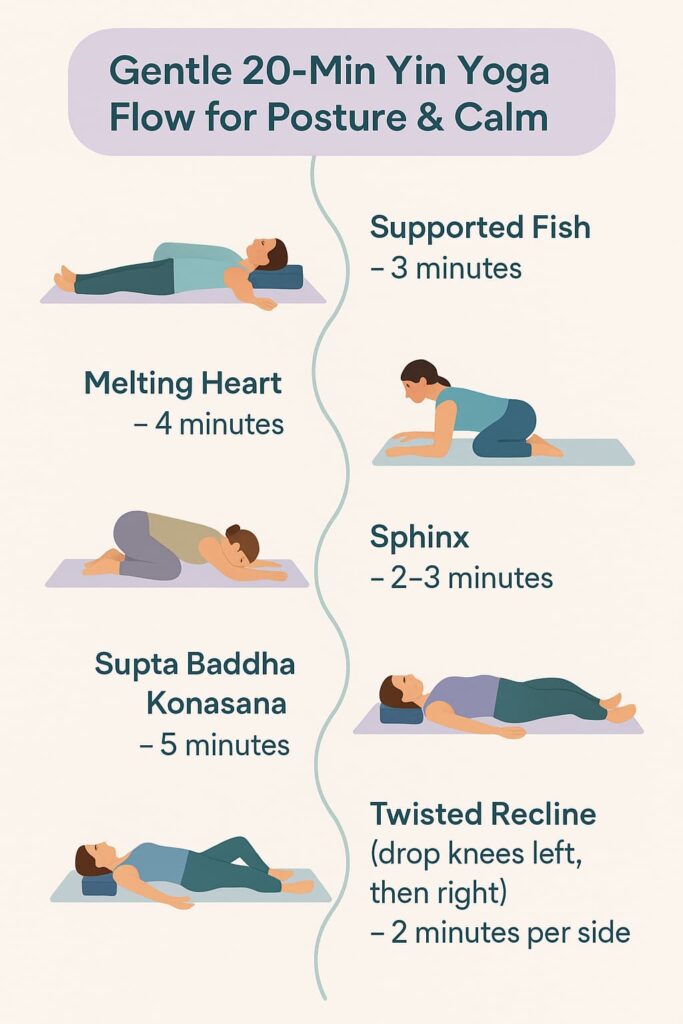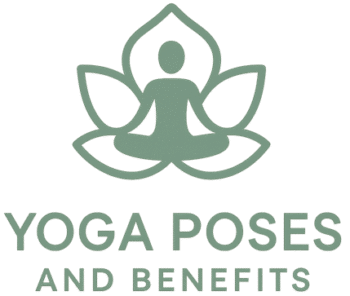Why Yin Yoga Heart Openers Help Body and Mind
Yin yoga heart openers gently stretch the chest, shoulders, and upper back while calming the nervous system. Unlike fast-moving practices, yin yoga uses long, supported holds to target fascia and joints, easing tension built from sitting or stress. These slow shapes improve posture, deepen breath, and help balance energy through the heart chakra, often associated with love and compassion. Holding poses for several minutes creates stillness, softening both the body and mind. Practicing regularly helps counter rounded shoulders, improves lung expansion, and creates a natural open heart posture, making everyday movement feel lighter and more grounded.
What Makes Yin Yoga Different
Yin yoga focuses on passive stretching, allowing muscles to relax so deeper tissues can lengthen safely. Most poses are seated or reclined, often supported by props like a bolster or block for comfort. Long holds — three to five minutes — stimulate energy channels similar to acupuncture pathways, which may enhance emotional balance. Because the pace is meditative, yin offers a grounding counterbalance to active yoga styles such as Hatha or Vinyasa. Many practitioners also use online yin classes to stay consistent, enjoying guided sequences that emphasize gentle chest and spine openings while fostering relaxation.
Benefits of Heart Opening Yin Yoga
Heart-opening yin yoga improves flexibility in the shoulders and spine, supports fuller breathing, and encourages emotional release. Gentle backbends such as Supported Fish or Melting Heart (Anahatasana) create space across the ribs and chest, helping counter hunched posture. These shapes activate the parasympathetic nervous system, reducing stress and inviting a calm, centered state. Balancing the anahata (heart) chakra through these postures can also help cultivate empathy, gratitude, and ease.
Key Poses for Heart Openers
Begin with Supported Fish Pose: recline with your upper back on a bolster and arms open beside the mat. Hold three minutes, breathing slowly.
Move to Melting Heart (Anahatasana): from hands and knees, walk arms forward, letting your chest sink while hips stay above knees. Hold four minutes.
Shift into Sphinx Pose: lie on your belly, elbows beneath shoulders, lifting the chest gently.
Finish with Supta Baddha Konasana: recline with the soles of your feet together, knees supported on each side, holding five minutes.
Transition slowly between each shape, letting both sides of the body settle evenly before moving on.
Building a Heart Opening Yin Yoga Sequence
A complete yin yoga sequence for the upper body takes about 20–30 minutes:
- Supported Fish – 3 minutes
- Melting Heart – 4 minutes
- Sphinx – 2–3 minutes
- Supta Baddha Konasana – 5 minutes
- Twisted Recline (drop knees left, then right) – 2 minutes per side

Focus on steady inhales to open the chest and slow exhales to release the back and ribs. Using props ensures comfort so you can fully relax into each posture.
Online Yin for Flexibility and Calm
Practicing online yin offers flexibility for those who prefer home sessions. Guided classes walk you through heart-opening sequences while allowing privacy to process emotions. Set up your mat with a bolster or block, dim the lights, and follow along at your pace. Many virtual classes highlight the heart chakra, blending breathwork, gentle backbends, and meditation for a complete experience.
Extra Benefits Beyond Flexibility
Regular yin yoga heart openers also aid digestion by gently stimulating the abdomen during supported backbends. They calm the nervous system, help reduce anxiety, and improve sleep. By opening the sides of the torso and releasing the upper spine, breath flows more freely. These effects combine to create better posture, emotional resilience, and a deeper sense of balance, both physically and mentally.
Practicing Yin Yoga Safely
Listen to your body throughout each hold. Use props to reduce strain on knees, hips, or lower back. Avoid forcing the ribs or shoulders; mild sensation is expected, sharp pain is not. Keep joints soft rather than locked. Move slowly between poses, pausing for at least 30 seconds to let the body reset. Prioritizing safety allows you to enjoy the release of each heart-opening posture without discomfort.
Creating a Lasting Practice
Making yin yoga heart openers a daily or weekly ritual supports physical alignment, deeper breathing, and emotional clarity. These gentle shapes create a balanced heart space, soften tension in the spine, and foster a sense of calm that extends beyond the mat. Whether using online yin classes or a personal yoga sequence, committing to these postures cultivates flexibility, grounded energy, and lasting openness.

